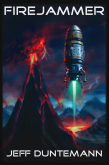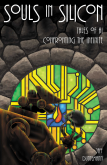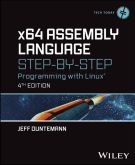- Several people have asked why I didn’t post any photos from the big 4-day dog show in Denver, and I must admit (with profound annoyance) that my camera bag vanished sometime on Monday, and both of my digital cameras were in it. That’s a Canon G10 and a Nikon CoolPix S630, and with the biggish SD cards I put in them, it’s close to a $1000 loss. Neither the hotel nor the National Western Complex recovered the bag, so I can only assume it was stolen during the show, and with it went all the photos we took through Sunday night.
- Slashdot reports that 80% of all software exploits during the fourth quarter of 2009 were malicious PDF documents. I’ve been a Foxit user for some time, but as Foxit becomes more popular, the bad guys will begin exploiting its flaws as well. (There is evidence that this has already happened.) It may be time to test software like Evince and Sumatra, both of which are available for Linux and Windows.
- As I write this, you have eight hours to bid on the Compaq II machine that Anders Hejlsberg used to develop Turbo Pascal 4.0. The proceeds from the auction go to the Clinton Bush Haiti Fund. It’s one of those green-screen luggable that I always admired, but bidding is currently at $2025, yikes. (Thanks to the many who pointed this out, with Larry O’Brien being the first.)
- Something confirming a phenomenon that I’ve noticed: Food expiration dates are conservative, and most food is good for a reasonable period after they supposedly time out. Still, after expiry, your nose is your stomach’s best friend.
- For whatever it’s worth, here’s a list of the top-grossing movies of all time, with inflation-adjusted values. (Thanks to Frank Glover for the link.) Unsurprisingly, Gone With the Wind still beats all comers with a mind-boggling 1.5 billion dollars, the though the original Star Wars is right behind it at $1.3B. What’s worth noting is that all but six films in the top 14 were either Disney animation or special-effects extravaganzas. (It’s all but five if you think the opticals in The Ten Commandments were significant, as I do.) Lesson: We don’t go to the movies to watch unpleasant people screaming at one another.
- Also from Frank comes a pointer to a short item suggesting that we kiss to enforce reproductive monogamy by developing immunities to one another’s specific viruses. I’m not sure I buy it either, but evolution has done far weirder things than this.
software
Odd Lots
Odd Lots
- Wow! The Authors’ Guild finally had a good idea a couple of weeks ago: Who Moved My Buy Button, a Web site that tracks Amazon’s “Buy” button for any given title. If the Buy button goes away (for example, if the book goes out of stock or if the publisher places it out of print–or if Amazon gets in another cage fight with a major publisher) you get an email to that effect. Don’t miss their “Buttonology” page, which explains how to interpret Buy button disruption by inspection. (Thanks to Bruce Baker for the link.)
- So what exactly is this, anyway? It looks like what used to happen to me when I tried to develop my own film (briefly) in 1966, and found these odd (and similar) little anomalies on my negatives. Dirt, or perhaps the edge of the film contacting the center. Nothing says he wasn’t using a film camera, but film is pretty uncommon these days. If I had to guess (and assuming it isn’t some flaw in the camera optics) I like the idea of a meteor passing through the ionized region of the atmosphere where the aurora display was happening. (Thanks to Frank Glover for the link.)
- While we’re talking high-energy physics, I’m finding it remarkable how rapidly an apparently dead Sun came back to life, on or about January 1. We now have three significant sunspots on the visible face, including a genuine monster. (Here’s an animated GIF of spot 1045 growing.) This gives us a sunspot number of 71, the likes of which I haven’t seen in three or four years. I’ve been spinning the dials downstairs, and have heard openings on 18 MHz and even 21 MHz. Gonna get those wires shielded before the next solar minimum, fersure.
- Integrated reader/bookstore systems have made me a little bit nervous ever since the Kindle Orwell debacle last year, and the iPad, if anything, will be even more vulnerable to that sort of remote meddling. It’s not so much malfeasance by the system operators as their vulnerability to government corruption and coercion. Here’s a perspective from a French chap.
- Still wedged on VMWare Workstation, but Bp. Sam’l Bassett pointed me to a site providing lots of free VirtualBox VMs. The question of how trustworthy such downloadable images are is a good one, but they’re certainly one way to mess with a new OS without having to fuss with hard disk partitioning and installation.
- I know it’s really her name, and no disrespect is intended, but when I read a headline like: “Costa Rica Elects Chinchilla First Woman President” I don’t see what I’m supposed to see. Journalists used to be taught to avoid gaffes like this, and many other news organizations did. Including her first name would have helped.
- I kid you not: Pepsico is wrapping up a limited-edition, 8-week-only campaign for Mountain Dew Throwback, which contains Real Sugar instead of high-fructose corn syrup. I’m a diet soda guy and won’t partake, but that’s a quarter step in the right direction. (My guess: The ridiculous ethanol-as-fuel scam is making corn expensive enough so that HFCS is not the big win that it used to be.)
- Once again, XKCD scores big–and loud. (SNSFW.) (Thanks to Baron Waste for the link.)
Odd Lots
- Stumbled across Atlas Obscura, which is a collection of pointers to peculiar places around the world, including a museum in Iceland housing the world’s largest collection of animal penises. Alas, they do not list Bubbly Creek, on the south side of Chicago, where the stockyards dumped untold quantities of animal blood and offal for 80-odd years, forming a layer of clotted blood up to three feet thick on the riverbed. Peculiar don’t quite capture it.
- Don’t know if I buy this, exactly, but there is some evidence that people lose weight just by living at higher altitudes. I certainly weigh less at 6600 feet than I did in Scottsdale at 1900, though strength training, shunning sugar, rationing grains, and eating lots more meat and dairy may have had something to do with it as well.
- AVG is at it again; I got a trojan warning today for Trojan Generic 16.AUZZ in the installer for the Pan newsreader, which I have used off and on for several months. The file has been in my installers directory since last September and never triggered an alert before. I don’t think it’s a threat, but it demonstrates the difficulties of signature-based virus detection.
- In case I haven’t mentioned it before: I’ve abandoned Winamp (after something like twelve years) for the VLC Media Player. It plays every audio and video format I’ve thrown at it (including some odd ones like mkv) except for MIDI. It never bitches about codecs and so far has never failed to play a playable file or disc. It even plays HD video, though the only example I have right now is some footage of me doing stand-up comedy with Terry Dullmaier at our 40th grade school reunion. Simple, sane interface with controls big enough to see. Free. What’s not to love?
- And the Gimp may become a lot more lovable within a year. Man, I’ve tried to love the product for years…and always failed. The 2.8 version, due in December, could be just the thing.
- Cool emerging space tech: Ionic mini-thrusters small enough to build several into a CubeSat.
- What is the term for those people who dress up in chicken suits and wave signs too damned close to the street near places like Wild Wings? (Lately it’s mostly been guys in Statue of Liberty suits hawking Liberty Tax Service.) Helluva way to make a living. (I keep thinking I’ll be wiping them off my windshield.)
VMWare Player and the Thoughtpolice Images
Quick non-rant update to yesterday’s rant: It’s Sunday night and I didn’t expect to hear from VMWare support today, so I did a little thinking and came up with a crazy idea: What if somebody else has already created VMWare images of popular Linux distros and just put them out there?
Heh. Somebody did. And even though I can’t install Linux (or anything else) in a brand-new VM, I googled around and found a page offering a whole bunch of Linux-in-a-VM images, all freely downloadable. They’re big (most of them over a gigabyte) but there are torrents for them and they came down fast. I downloaded Fedora Core 12 and OpenSuSE 11.2. What I didn’t mention yesterday is that when you install VMWare Workstation, you also install the standalone VMWare Player, which is a stripped-down run-only version of Workstation. The version of Player that installed with Workstation was not bound by the Workstation license, and worked.
The Fedora Core 12 image loaded and ran flawlessly. The OpenSuSE image did not load at all. I don’t think it was a damaged zip file; the message put up by Player indicated that “opensuse is not supported.” Smelled like an “old software” problem to me. My copy of Workstation dates back to 2007 and installs Player V2, so I downloaded the most recent version of Player (3.0) and installed it. This time the OpenSuse image loaded right up, albeit in KDE 4. (That’s OK; I need to spend some time exploring KDE 4.) Lesson: In the VM world, the latest is probably the greatest…or at least worth having.
I installed Lazarus in the Fedora image, and if you’re logged in as root, it really is as simple as:
yum install lazarus
(Use su -c 'yum install lazarus' if you’re not in root.) Took about 25 minutes. I haven’t run a lot of tests on the new install, but the source is there and everything looks functional.
Several people wrote to recommend the alien utility for converting rpm packages to debs. I’m going to try that, and (assuming the generated deb works) I’ll just host the deb on my upcoming FreePascal page so people can download it. (Why don’t I think it will be quite as easy as that?)
Another crazy idea: Once I get my Workstation 6 running, create a VM of Ubuntu with Lazarus installed, however it is to be done. At that point, who needs to install anything? I’ll just tell people to download the VM and run it in Player. I can set up the VM to save state with Lazarus running and the book itself open in Okular, with all the example programs in appropriate directories, ready to load and poke at.
I’m still annoyed at VMWare, but at least they’re not holding up my research any longer.
Rant: That Old Linux Package Format Blues
I described my FreePascal from Square One book project in detail a couple of weeks ago, and I work on it as time allows. There have been some hangups; in fact, I sometimes wonder if I’m not Cing evil spirits at work hereabouts, frustrating my efforts to popularize Pascal.
A lot of this has to do with Linux software package formats. I’m trying to write a chapter in a beginners’ book describing how to install the FreePascal/Lazarus compiler/IDE combo. For Windows it’s easy: Download the executable installer, run it, and answer the wizard’s questions. I ran into a stone will with Ubuntu: There is a deb package for Lazarus (which includes the FreePascal compiler binaries) but it’s ancient, and much worse, it does not install the compiler source code, which Lazarus needs. Now, why an IDE needs the source code for its compiler is obscure, but that’s how they wrote it, and when you run Lazarus in the absence of FreePascal’s source code, it complains, and warns that some (unspecified) subset of its features may not work.
The rpm package, on the other hand, is current and complete. In the installation chapter I’d like to describe installation in detail for Windows and the three most popular Linux distros: Ubuntu, Fedora Core, and OpenSuSE. Fedora and OpenSuSE use RPMs. No problem there. Installing Lazarus under Fedora may in fact be as simple as opening a console and typing “yum install lazarus.” (I haven’t tried that yet; more on why a little later.) YaST has OpenSuSE covered. But with the Linux market leader, I’m hosed.
Yes, I know, there are solutions: Get the tarballs from the Web site, build the whole damned thing from source, convert from rpm to deb with Alien, etc. etc. etc. I can do that stuff. But this isn’t about or for me. It’s for people who are just starting in on programming and may be just trying out Linux. I don’t want to explain how to frakking rebuild the whole damned 200 MB monstrosity from source code. (Wasn’t CP/M Turbo Pascal happy to take up 24 KB? Does anybody even remember that old letter “K”?) All that is beside the point. The real question is this: Why can’t the FreePascal/Lazarus guys keep a workable deb package together? I know enough about Debian package management to be sure that it’s possible. (I don’t knows enough, alas, to do it myself.) It isn’t being done. And nobody seems to want to talk about why.
Not having a complete install for Ubuntu made me uneasy about running tests in Lazarus under Ubuntu, so I realized I would have to get instances of Fedora Core and OpenSuSE together. How hard could that be? Well…
- I created a new VM in Workstation 5 for Fedora Core 12. The install failed partway through, with the VM locked up. “He dies and gives no sign.”
- Ditto a VM for OpenSuSE. Ditto. The YaST installer could not detect the virtual hard drive created for the VM, so we didn’t even get as far as installation.
- I reformatted an old Kubuntu partition on a machine downstairs and attempted to install Fedora on it. Different fail, but fail nonetheless. The DVD vetted itself with a clear bill of health, but I may download it again anyway.
I managed to get OpenSuSE to install on that same partition, so I finally have a complete and trustworthy Linux installation of Lazarus. And I will say that I really like OpenSuSE. (This is the first time I’ve ever laid hands on it.) The OpenSuSE Build Service is a thing of beauty.
The double VM fail is a puzzler. And that led to me wonder if newer distros just don’t play well with 2004-era Workstation 5. So I finally took my still-sealed retail copy of Workstation 6 off the shelf, installed it, registered it…and VMware doesn’t seem to know how to license it. I’m sure they don’t do much business in boxed product, but that’s no excuse. Email tech support with their Indian support people has a 24-hour turnaround, and the last time I got a response, the guy sent me the serial number for my copy of Workstation 5 and told me to use that, as it was already licensed. Gakkh. So they have my $180, and I have a copy of Workstation 6 that won’t run. We’re three days into this adventure, and I’m sure nothing will get resolved until Monday. If then.
You wonder why I hate activation systems so violently.
And people wonder why tech books take so long to write.
Screw it. It’s the weekend. I’m going to find the nearest bag of potato chips and eat the whole damned thing.
Odd Lots
- Here’s a nice detailed article about how Linux treats hard disks and how Linux partitioning works.
- We now have two major sunspots on the visible face of the Sun. I don’t remember the last time I saw that. (Most of the specks we’ve been giving sunspot numbers to in the last couple of years don’t count, in my book.)
- The New York Times has finally shone their light on an ebook marketing technique that Baen Books pioneered years ago. (Thanks to Pete Albrecht for the link.)
- Version 4.0 of the FastStone Image Viewer is out, and well-worth having. It’s the best image browser I’ve ever used, and if you have to sort an SD card full of digital photos and cull marginal shots quickly, there’s nothing like it. Make sure you get the portable version; it lacks nothing and doesn’t make any changes to your system. Freeware. Highly recommended.
- Rich Rostrom sent a pointer to a fascinating article on Moscow’s stray dogs. They’re going feral, but it’s a peculiar sort of urban feral that considers humans and all their gadgetry to be just another part of the landscape. They’ve learned how to ride the subway, for pete’s sake!
- I’d read in a number of places that faces judged as beautiful are generally “average” faces, without a lot of distinguishing characteristics. Because I could never quite get a grip on what an “average” face would be, I always took the notion with a grain of salt. But this site, assuming it really is creating a “facial average” from a gallery of headshots, suggests that there’s something to it. Start with two faces, then add faces one by one, and see if the average face doesn’t become more beautiful (and distinctly ambisexual) as you go. It did for me.
- Here’s a short interview with Bob Silverberg, describing his writing life during the Golden Age of Pulps. A million words a year…
- Cracking ice in the surface of a frozen lake sounds like a blaster battle.
- From the That-Certainly-Has-To-Count-For-Something Department: Behold the world’s largest disco ball.
The Night of the Monumental Fail
(And you thought I was talking about the Massachusetts senatorial election…)
Pulled down the Fedora 12 DVD ISO earlier today, burned it to disc, and turned it loose on my Linux SX270, which at the time had a 60 GB hard drive with a functional Ubuntu Intrepid partition on it. I’d been meaning to install Fedora for some time, and wanted to try a few things on which I’ll report in the near future.
Alas, things went what may be irretrievably bad, or bad enough to be irretrievable without completely wiping the hard drive, including my Ubuntu instance.
No, I don’t know what went wrong. It’s hard to troubleshoot a failed install of an OS. What happened went this way:
- I used the built-in partitioner (Disk Druid, unless I misrecall) to shrink the existing 55 GB partition to 22 GB.
- I allocated the rest of the drive to the Fedora partition.
- With the shrink/allocation apparently successful, Anaconda dove in and started the installation. After installing 106 package files, the process stopped. The machine wasn’t completely frozen–the mouse pointer still worked–but nothing was happening, no disk activity, nada.
- After watching it sit at file 106 for over an hour, I gave up and hit the power switch. The machine had only 512 MB in it, so I dropped my spare 512 MB DIMM into the second slot. I know that most Linux installers set a lot of stuff up in memory prior to the actual install, so maybe it just ran out of RAM.
- When I booted back into Ubuntu to take a look at what remained in the wake of the crash, I saw the new partition, and saw that it did not have a file system. That seemed odd to me, since for all appearances it was copying files to the hard disk.
- I rebooted from the install DVD and started the install from scratch. I tried to make use of the partition I had created on the first pass through, but nothing selectable allowed me to make use of the partition.
- I booted back into Ubuntu and deleted the new partition. I then restarted the install DVD and told it to use the free space where the new partition used to be. Again, it stopped at the partitioner, this time telling me that there was no root partition defined. I defined the existing Ubuntu partition as root, and kept going.
- Almost immediately it died and gave no sign.
Now, I have nothing irreplaceable in the Ubuntu partition. I could wipe the whole drive if I wanted to. But it makes me wonder if the engineers at the Fedora project ever took into account the (inevitable) event of an install failure. Is there any machinery in Anaconda to pick up the pieces when an install croaks and it has to start fresh?
If a Linux distro won’t install with 1 GB of RAM, I’m not sure it still qualifies as Linux. Or is there something else freaky about this machine? I don’t know, and don’t know how to find out. I have room on my slightly cranky 3 GHz Pentium downstairs, and that box is loaded. I’ll try again down there. Still, this counts as a very significant fail for Fedora. I’ve installed Ubuntu on SX270s at least five times, and never had any problem more significant than a video mode screwup requiring minor editing of xorg.conf.
Next attempt: OpenSuse. We’ll see if it can move into Fedora’s slightly scorched apartment, or if it needs to gut it to the walls first.
Odd Lots
- So here, on the eve of the end of a year I’d just as soon forget, the last Odd Lots of 2009. Carol’s in Chicago and I’m staying home tonight with a lapful of dogs and a good book, which on this occasion will be Brian Fagan’s The Long Summer, his history of the Holocene Warm Period. Carol will be back on Saturday. Getting tired of meat. May have some mashed potatoes tonight.
- The Christmas tree is no longer taking water, and I perceive that’s it’s begun to dry out. We brought it home on December 10, so it has been standing guard in our living room for three weeks. This may be a new record for us. We’ve had trees stand (a little) longer, but their final two weeks were a rain of needles.
- The day after Carol and I showed Carol’s mom our Christmas tree via Skype video call, this Zits strip was published. (Thanks to Roy Harvey for letting me know–I read Zits but generally in the newspaper, and not every day.)
- 2009 is ending with 260 sunspotless days. 2008 had 266, and December was the most active month of the year, so we’re guessing that the Long Solar Minimum is mostly over. Can 15M skip be far behind?
- Ray Kurzweil has announced a new ebook software reader package called Blio. Not a lot of detail and no software to download yet, but it’s going to be a free product, with versions for both mobile devices and the desktop. Introduction will be at CES next week.
- The ebook technology to watch in 2010 is Qualcomm’s Mirasol, which promises color without sacrificing battery life or readability. Looks good, but what we need much worse are larger displays and higher resolution.
- Once again, Bruce Schneier nails it: The bulk of our antiterrorist strategies rely on magical thinking. This is not the way to win; alas, magical thinking appears to be a pervasive part of modern culture, and I’m not talking about Harry Potter.
- Recent discussions of digital media piracy reminded me of the 2005 article in Wired describing the media piracy “scene” ecosystem (topsites, couriers, races, etc.) and how it works. Big Media may be paranoid, but that doesn’t mean that no one is out to get them.
- Pete Albrecht photographed two UFOs flying in formation (big animated GIF) while taking a long-exposure shot of M42, the Orion Nebula, through his big Meade telescope. Nothing spooky or alien about it, but before you click on the explanation (in his December 28 entry) think for a second and see if you can figure it out on your own.
- From the Words I Didn’t Know Until Yesterday Department: murse, more often called a “man bag,” which is basically a purse carried by a guy.
- Ditto above: prepper , a person who prepares for the end of the world by stockpiling peanut butter etc. They called themselves survivalists until survivalism became equated in the public mind with psychos packing machine guns; watch for the word to vanish when 2012 ends but the Earth is still here. (Thanks to Pete Albrecht for the link.)
10,000 Pirated Ebooks
Ebook-related items have been gathering in my notefile lately, and this is a good time to begin spilling them out where we can all see them. The triggering incident was a note from the Jolly Pirate, telling me that one of my SF stories was present in a zipfile pirate ebook anthology that he had downloaded via BitTorrent. That people are passing around pirated versions of my stories is old news. “Drumlin Boiler” was posted on the P2P networks a few months after it was published in Asimov’s in 2002, and my better-known shorts have popped up regularly since then. No, what induced a double-take was the name of the pirate anthology: “10,000 SciFi and Fantasy Ebooks.”
10,000? You gotta be kidding!
But I’m not. Jolly sent me the 550K TOC text file, which is 9,700 lines long, with one title per line. Not all are book length, and many, in fact, are short stories. Still, the majority of all book-length SF titles I’ve read in the last thirty years are in there, and so was “Borovsky’s Hollow Woman,” albeit not under my byline. (I wrote the story with Nancy Kress, who is listed as sole author.) The only significant authors I looked for but did not find were George O. Smith and Charles Platt. (One howler: Bored of the Rings is said to be by J. R. R. Tolkien. Urrrrp.)
The collection is 4 GB in size. The Jolly Pirate said that he had downloaded it in just under three hours. He attached the file for “Borovsky’s Hollow Woman,” which was a plain but accurate 57K PDF. Intriguingly, the date given under the title is January 28, 2002. The damned thing has evidently been kicking around for at least seven years, if perhaps not in its full 4 GB glory. This suggests that the anthology is not entirely ebook piracy but mostly print book piracy. (“Borovsky” was never released in ebook form.)
Some short comments:
- I verified the existence of the anthology from the Pirate Bay search engine. It really does exist. (So, evidently, does the Pirate Bay, which surprised me a little, considering recent efforts to take them down.)
- 10,000 ebooks do not take a great deal of space by today’s standards. (Admittedly, better files with cover scans would be larger.) No one will think twice about a 4 GB download for size reasons, when 750 GB drives are going for $69.95.
- The PDF is ugly. The lines are far too wide for easy readability and (since this is not a tagged PDF) not reflowable. That said, I did not find a single OCR error.
- The Windows pathname of the text file from which the PDF was generated is shown at the top of every page. The pathname includes the full name of some clueless Dutch guy, from whose Mijn Documenten folder the file came. Ebook piracy clearly belongs to the common people, not some elite cabal skilfully dodging the **AA.
- I’ve used a scanner to rip a couple of print books (plus ten years of Carl & Jerry print stories) and it is horrible hard work. However, the anthology demonstrates that if print is a form of inadvertent DRM (which I have long thought) it is not a particularly strong one. After all, as Bruce Schneier has said about DRM systems generally, they only have to be broken once.
This last item is key. A printed book is a worst-case challenge for an ebook pirate. Compared to cutting off the binding and making sure the paper pages all feed straight through the scanner ADF and then fixing the inevitable OCR errors, stripping out an ebook’s DRM is trivial. If ebook piracy is not yet a big deal, it isn’t because it’s difficult. It’s still because reading ebooks is borderline painful. I may not be typical, but if I can buy a used copy of a recent hardcover of interest for $10 or less, I’ll choose the hardcover rather than an ebook at any price. Sooner or later the readers will catch up to paper, and by then, well, we may see a 4 TB file called “10,000,000 EBooks About Everything” on the file-sharing networks, and it won’t even take an objectionable chunk of our 80 TB hard drives.
You think I’m kidding? Let’s compare notes in five or six years.
Linux Bug #257790
I never thought I’d say anything like this, but…I may have run afoul of Linux bug #257790, “Kernel does not recognize Western Digital Caviar SE WD3200AAJS 320GB 7200 RPM SATA 3.0 GB/s Hard Drive (2nd Generation)”. I recently bought a new 7200 RPM hard drive (guess which model!) for my main desktop system, which had come with an older Seagate 5400 RPM unit as the primary bootable drive. I migrated my Windows XP install over to the new WD drive without any trouble. But when I go to do a clean Linux 9.10 install, the installer does not see the WD drive. It does see the secondary drive in the system, which is a 5400 RPM Seagate 750 GB unit. But the WD? Installer no see.
Interestingly, gparted has no trouble seeing the WD, and even resized the Windows partition there to make room for two additional Linux partitions. However, when I go to install Karmic in the new partition on sda2, the installer doesn’t see the sda device at all…except when I check the button telling the installer partitioner to erase the whole drive and install Linux on the entire thing. Then sda magically appears. At that point, when I re-check the option to install Windows and Linux side by side, the sda device vanishes from the device selection pane at the top of the installer partitioner window.
While sniffing around the Web looking for insights, I ran across Linux Bug #257790, simply because it names the precise model of drive that I just bought. Supposedly, that bug was fixed for the 9.10 Karmic release at the end of October, but evidently the installer still has some reservations about certain WD drives…like the one I now have. I’m tempted to download and install Fedora to see if I get better service, but if any of you Linux gurus have any suggestions I’ll certainly hear them. I do not want to go back to my older (slower) drive, nor do I want to wait for Lucid Lynx (V10.04) due in April. I can’t imagine that this is not a fixable problem. Thoughts?











